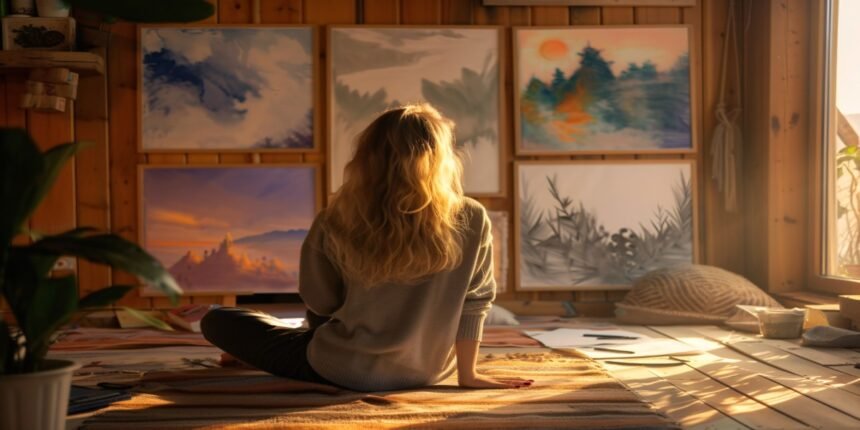From the earliest cave walls to modern digital canvases, painting has been one of humanity’s most profound forms of expression. It transcends language, culture, and time, capturing not just images, but emotions, stories, and moments. While technology has evolved and reshaped how we view and create art, the essence of painting remains unchanged: a means of bringing inner visions to life.
This article explores the journey of painting as an art form, the inner workings of the creative process, and what it truly means to be a Painter in the modern world.
The Origins of Painting
Painting is as old as civilization itself. The earliest evidence of painting dates back tens of thousands of years, where prehistoric humans used natural pigments to illustrate stories, rituals, and daily life on cave walls. These early works served more than decorative purposes—they were communicative, symbolic, and spiritual.
Over the centuries, different cultures developed their own styles, techniques, and tools. From the richly detailed murals of ancient Egypt to the symbolic brushwork of traditional Chinese ink paintings, the diversity of painting is as vast as human experience itself. Each period in art history brought with it new approaches, philosophies, and revolutions—each shaping the role and identity of the Painter.
The Painter’s Toolkit: Materials and Mediums
One of the most fascinating aspects of painting is the sheer variety of materials a Painter can use. Paints, brushes, surfaces, and techniques vary widely across time and styles. Some of the most well-known mediums include:
- Oil Painting: Known for its richness and depth, oil paint allows for detailed layering and long drying times. It’s been a favorite among classical artists.
- Acrylic Painting: A modern alternative to oil, acrylic dries quickly and offers flexibility in texture and technique.
- Watercolor: Loved for its translucency and subtlety, watercolor is often used for light, flowing compositions.
- Digital Painting: A growing form in the 21st century, digital painting uses tablets and software to mimic traditional methods while enabling endless possibilities.
Each medium comes with its own learning curve and aesthetic. A true Painter explores these materials not just as tools, but as extensions of their own thoughts and feelings.
The Creative Process: From Vision to Canvas
At the heart of painting lies the creative process—a deeply personal and often mysterious journey. For many artists, the blank canvas is both a challenge and an invitation. It requires not only skill and technique but also vulnerability and introspection.
Here’s how the creative process often unfolds:
- Inspiration: It can come from anywhere—a fleeting moment, a powerful emotion, a dream, or a memory. The Painter senses a need to express something visually.
- Sketching and Planning: Some artists plan meticulously, creating several drafts and studies. Others dive in spontaneously, letting the work evolve organically.
- Execution: This is where intuition and technical ability converge. Choices around color, texture, composition, and brushwork all reflect the artist’s inner world.
- Revision: Many works go through multiple phases. Painters often return to their canvas to adjust, rework, or refine until the piece “feels right.”
- Completion: Knowing when a painting is finished is an art in itself. Some say a work is never truly complete, only abandoned at a certain point of satisfaction.
Styles and Movements in Painting
Throughout history, painting has gone through numerous stylistic shifts, each one redefining the role of the Painter and the meaning of art.
- Realism: Focused on depicting the world as accurately as possible. Great attention is paid to detail, perspective, and light.
- Impressionism: Emerged in the late 19th century, emphasizing light and movement over exact realism. Brushstrokes became looser, and color took center stage.
- Expressionism: This movement emphasized emotion and subjective experience, often using bold colors and distorted forms.
- Abstract Art: Abstract painters moved away from representational forms altogether, using shapes, colors, and patterns to evoke ideas and feelings.
- Surrealism: Blending dream imagery with reality, surrealists sought to unlock the unconscious mind through their paintings.
Each of these styles represents a different way of seeing the world, and many contemporary artists blend these approaches to create something uniquely their own.
Painting as Therapy and Self-Discovery
Beyond its aesthetic value, painting serves as a powerful tool for healing and personal growth. In art therapy, individuals use painting to express feelings that may be difficult to articulate in words. This process can help with anxiety, trauma, depression, and self-esteem issues.
The act of painting can be meditative. Mixing colors, making marks, and losing oneself in the flow of creativity allows people to reconnect with their inner selves. It’s not about producing a masterpiece—it’s about being present, honest, and expressive.
Even outside therapeutic settings, many people find solace and clarity through painting. The canvas becomes a mirror, reflecting both the beauty and complexity of the human experience.
The Modern Painter: Challenges and Opportunities
Being a Painter in the 21st century comes with both unique challenges and exciting opportunities. The art world has expanded beyond galleries and museums to include social media, online marketplaces, and digital platforms. This shift has made it easier for artists to reach global audiences, but it also means facing a saturated and competitive landscape.
Moreover, the definition of what it means to be a Painter has evolved. No longer confined to traditional tools or techniques, today’s artists may combine painting with sculpture, performance, video, or augmented reality.
Yet, despite all these changes, the essence remains. A Painter is someone who seeks to understand and interpret the world through visual language. They challenge norms, provoke thought, and invite viewers to see through a different lens.
Cultivating the Artistic Mindset
Whether you’re an aspiring artist or an admirer of the arts, understanding the mindset of a Painter can be deeply enriching. Here are a few qualities that define many successful painters:
- Curiosity: A constant desire to explore, question, and experiment.
- Patience: Mastering painting takes time. It’s about embracing mistakes and learning from them.
- Observation: Great painters notice the subtle details—the way light falls on a face, the mood in a color palette, the story behind a still moment.
- Resilience: Art is subjective, and not everyone will understand or appreciate your work. True painters keep creating regardless.
- Passion: More than anything, painting requires love—for the process, for the journey, and for the endless pursuit of beauty and meaning.
The Legacy of Painters
Throughout history, painters have left a legacy that transcends time. Their works hang in galleries, adorn books, inspire revolutions, and bring joy to everyday spaces. But more than their paintings, it’s their vision that endures—the way they helped us see the world differently.
Being a painter is not just about applying paint to a surface. It is about creating connections—between the artist and the viewer, between thought and form, between emotion and expression.
Final Thoughts
Painting is not just an art form—it’s a language, a meditation, a revolution, and a gift. In a world increasingly driven by speed and efficiency, the act of painting invites us to slow down, observe, and reflect.
Whether created by a seasoned master or a curious beginner, each painting holds a piece of the Painter’s soul. And in that offering, we find inspiration, understanding, and sometimes even transformation.
So next time you stand before a canvas—whether in a museum or your own studio—remember: you’re not just looking at colors and shapes. You’re witnessing a dialogue, a journey, and the timeless power of human creativity.
Also Read: Window Replacement







